"Timing is the skill of playing with silence, of disturbing it cunningly, of
hiding it so that the listener comes upon it with surprise and delight . . .
And in a story what is it that silence means? The unsaid, no?" |
John Berger, Preface to I Could Read the Sky, 1997 |
Much has been written about slow cinema, archive-based documentary, the essay film, the travelogue film and the road movie, but far too little about Pat Collins. His intimate, ineffably beautiful fiction debut, Silence, interweaves elements of all those forms, but might best be described as a collagist film-poem swaddled in an elegiac story. Collins deserves to be better known. Since he announced his arrival in 1999, with Michael Hartnett: A Necklace of Wrens, he has established himself as a major figure in Irish film culture with a steady stream of award-winning documentaries, while earning additional respect for his vital work as erstwhile editor of the much-missed quarterly Film West, his two-year stint as programmer for the Galway Film Fleadh, and his ongoing mentoring at Cork Film Centre. It is to be hoped that Collins's perfectly paced, poetic new film increases his international profile and that of Irish cinema. Regardless of how well Silence travels, it offers Ireland an opportunity to reconnect with herself after the disorientating death of the 'Celtic Tiger'.
Despite the esteem in which Collins is held at home, it is inevitable that Martin Scorsese's forthcoming adaptation of Shūsaku Endō's novel, Silence, will receive more international attention than Pat Collins's Silence. This will be the case not just because Scorsese's reputation precedes him, nor just because Colllins's work has – with the exception of his critically acclaimed documentary Abbas Kiarostami: The Art of Living (2003) – been firmly rooted in Irish soil and therefore rarely screened outside his native land. The likely differences in the reception of the two directors' versions of Silence will also reflect differences of temperament: in a reversal of national stereotyping, it is Scorsese who has the mythic 'gift of the gab'; Collins, despite his eloquence and intelligence, is one of the most self-effacing, softly-spoken individuals working in film today.
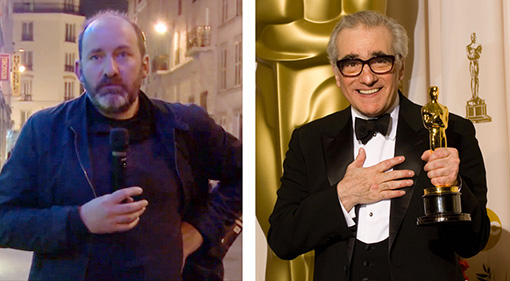
The twenty-odd documentaries Pat Collins has made to date reveal an insatiable curiosity, a deep respect for archive material and a poetic sensibility. Collins's films also display an enduring fascination with the interrelationship between lived lives, language, landscape, music, myth and the past. Those intertwined interests are evident in his perceptive portraits of cinematic and literary luminaries [Frank O'Connor: The Lonely Voice (2003), John McGahern: A Private World (2004), Gabriel Bryne: Stories From Home (2008)], in his lyrical studies of remote places [Tory Island in Oileán Thoraí (2002), Croagh Patrick in Pilgrim (2008), Fastnet Lighthouse in Fathom (2012)], and in his examination of his Ireland's turbulent history [Rebel County (2005), Famine in Ireland: Remember Skibbereen (2009), What We Leave in Our Wake (2010), What Remains (2012)]. Despite his slight, sideways shift toward fiction, Collins retains a documentary ethos. His haunting, hypnotic new film operates as both a distillation and deepening of his earlier work. He has described his last feature, the compelling essay film Tim Robinson: Connemara (2011), as existing "at an intersection between writing, filmmaking and the natural world." Silence maps the territory where the past and present intersect, the terrain where ancient Erin meets modern Ireland.
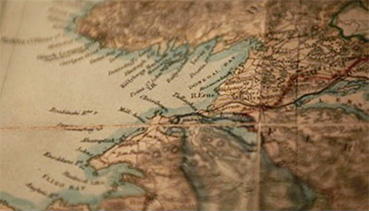
In the film's establishing scenes, we see reel-to-reel magnetic tapes revolve, hear Nellie Nic Giolla Bhríde's acapella rendition of a ballad of lost love ('The Breeze and I"), and meet the film's hirsute central character – Eoghan (Owen), a Berlin-based sound-recordist from Tory Island – as he walks alone in a high moorland place at dusk. Having set the tone of meditative melancholia that runs through the film, Collins then plunges us into the jarring noise of Berlin, where Eoghan has lived, 'in exile', for 15 years. After being commissioned to capture sound of in Irish landscapes far from man-made noise, Eoghan leaves his partner behind and embarks on a voyage of self-discovery and a return to his roots. That rudimentary, open-ended narrative is, however, merely the skeletal structure around which Collins constructs a profound cinematic meditation on, among other things, collective and individual identity, solitude, sound, stillness, and transcience.
Lead 'actor' Eoghan Mac Giolla Bhríde is essential to the success of the film. In his first appearance on film, he plays Eoghan, and himself, with quiet, soulful restraint. Mac Giolla Bhríde also adds enormously to the quasi-documentary authenticity of the film: he grew up in the northwest Gæltecht of Donegal, not far from Tory Island, and worked as a sound-recordist on Pilgrim. He also worked as translator (from Gaelic into English) on a couple of Collins's earlier films, co-directed Loch Dearg (2008) with Collins, and co-wrote Silence with Collins and his wife, Sharon Whooley. The characters Eoghan encounters in his journey from Berlin to Tory Island are not, by and large, actors; they are as real as Eoghan, even if their engaging conversations are often improvised. Although the 'spontaneity' of the many of the various meetings was 'manufactured' (often set up email), they feel entirely natural. This is not so much a matter of using predominantly non-professional actors, as of coaching people to be themselves within a fictional framework.
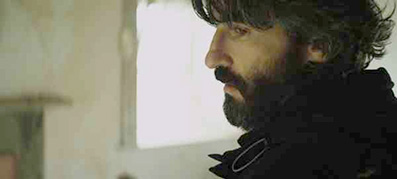
The film's 25-page script was as sparse as its plot. Silence evolved during it's making and only finally took shape in post-production, under the expert editorial eye of Tadhg O'Sullivan. Collins says: "The way the film developed was pretty spontaneous. It came together step-by-step, block-by-block." There is a typical example of Collins's improvised invention at the start of the film. As Eoghan takes leave of his partner in Berlin, she quotes a line from Hölderlin's ode Lebenslauf (The Course of Life): "So durchlauf ich des Lebens/Bogen und kehre, woher ich kam." ("So I follow the arc of life and return to my starting place."). This keynote line, Collins tells me, had not been in the script. In fact, he only came across it on the evening before that scene was shot, and, as actress Hilary O'Shaughnessy speaks German, he inserted it into the film the next day.
Collins says: "I'm not interested in 'the seven types of characters' or 'beginning, middle and end'. If I feel there should be a line of poetry in a film, or if it helps to cut to archive footage, I want to be able to do that. I don't want to be bound by rules. The fictional aspects of the film were just a way of imaginatively dealing with the landscape, the past and the present. Of course, Irish people tell each other stories all the time, but I don't think the Irish storytelling tradition translates into cinema the way people think it might. You have to change storytelling for cinema, twist it on its head. I didn't want to impose a story or a meaning on the audience. I wanted to leave it open to interpretation and avoid a closed story." He succeeds in doing so, to liberating effect. Neither the plot, such as it is, nor Eoghan's inscrutable face give much away. The little we can infer about how he feels and thinks, we glean from the film's soundtrack, the engaging, informative conversations he has along the way, and the film's collage of piquant still and moving archive images. The meditative journey is more important than the narrative destination.
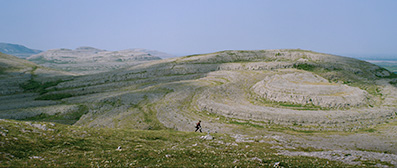
Eoghan's homecoming odyssey – which calls to mind Farrel's in Lisandro Alonso's Liverpool (2008) – enables cinematographer Richard Kendrick to linger lovingly on the unspoilt beauty of remote places: from rocky Mullaghmore on the Burren in Co Clare to the mountainous, tussocky expanses of Ballycroy national park in Co Mayo. Silence provides us with a temporary refuge from our urban lives by replacing the roar and rush of urban life with the more natural roar and rush of wind and wave [The sea (unfathomable repository of our deepest fears and essential source of sustenance) is one of Collins's recurrent motifs, as are lighthouses. Fathom, for example, which echoes Tacita Dean's films on Berwick and Longstone lighthouses, contains several seconds of mesmerising (wide-angle, fixed-camera) footage, shot from atop Fastnet lighthouse, of the pounding waves and circling birds below.].
At the beginning of the film Eoghan is enmeshed in Berlin, recording the clanking, metallic din of traffic and trains, by the end of it he is recording the thunderous impact of ocean on rock or the whisper of wind as it caresses billowing oceans of grass. Silence revitalises our strained, overstretched aural and visual senses by inviting us to listen and look more attentively than we tend to, or, rather, it allows us to savour sights and sounds many of us have lost touch with. It also offers us the peace and quiet we need to think calmly and clearly. As we join Eoghan on his unhurried, uneventful journey, and as he is drawn into himself, we are granted space to think for ourselves – about our own roots, our sense of belonging and self, and, more broadly, about what we lose when we become divorced from the kind of wild, empty places the film transports us to.
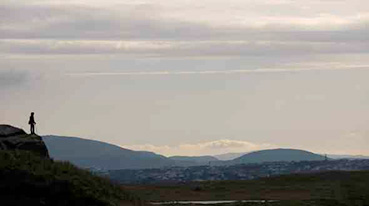
The way Collins allows us to interpret Silence for ourselves recalls an observation by Borges on books. Borges says: "The taste of the apple is neither in the apple – which cannot taste itself – nor in the mouth of the eater. It requires a contact between them. The same thing happens to a book. A book is a physical object in a world of physical objects. It is a set of dead symbols. And then the right reader comes along, and the words, or rather the poetry behind the words . . . spring to life." Haunting and deeply affecting as Silence is in itself, it requires the right readers. As the best films do, it asks for something from us in exchange for the rich rewards it offers.
Eoghan Mac Giolla Bhríde was immediately intrigued by the idea of the film when Collins approached him in 2006, and consequently he had plenty of time to mull over the role, but he was still surprised by the way the film developed. In an interview for the Spring 2012 issue of Film Ireland, he says: "I was really stumped, at the beginning, at how (Pat) managed not to be taken in by my attempts to tie everything up neatly in a narrative . . . It was only later that I saw that he was purposefully eschewing narrative in order to let more subtle nuances grow and gain ground . . . He recognised the poetry in every single shot and knew how to pace it to allow each scene to breath." Collins returns the compliment: "Eoghan brought a lot of himself to the film. I didn't know anyone who could encompass what I was trying to get across, so I had to find someone who had that culture in him already." Mac Giolla Bhríde certainly has the language and music of that distinctly Irish culture in him. He comes from a family of sean-nós 'folk' singers, and, as we discover in Silence, he is no mean singer himself. His brother Dominic won the 2012 Corn Uí Riada prize for sean-nós singing and his mother sings a version 'An Chúilfhionn' as well as of Ernesto Lecuona's 'The Breeze and I' on the soundtrack. Mac Giolla Bhríde was perfectly cast. He is the ideal conduit for Collins's metaphorical exploration of exile, migration and memory.
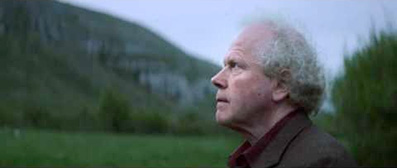
The people Eoghan meets on his journey also aid Collins in his enquiries into identity and the past, often articulating interconnected ideas about the disruptive collision between an unchanged landscape and changed social circumstances. Academic Pat O'Connor, who wanders into the film unannounced, hints at how the past forms in stratified layers on the landscape and in the imagination. Staring up at the Burren, he says: "The mind turns upon silence. Such an old humanised country we have you know. Two-way transmission between people and places. Legends heaped upon legends, lore heaped on lore, names heaped on names." Collins tells me of his admiration for the work of great folklorists such as Seamus Ennis, Alan Lomax, and Studs Terkel. His initial intention with Silence was to tell the story of a folklore collector not a sound-recordist. Eschewing conventional to-camera interviews, Collins deploys Eoghan as a kind of folklorist and roving interviewer, a mediator between the ancient and modern.
Eoghan speaks to Marie Coyne in the museum she established in an old boatshed on Inishbofin, off the Connemara coast. Coyne, who grew up on the island, has assembled an impressive collection of still images and artefacts (including her father's old donkey cart) that document the vanished way of life of her childhood. Later, Eoghan talks to fisherman Peter Lacey about the social cohesion and strong sense of community that was lost during the depopulation of neighbouring Inishshark. Describing the mass exodus from the island for the mainland in October 1960, Lacey says: "They scattered from each other . . . They were all one unit on the island, they helped each other . . . everyone went their own. They didn't need each other anymore as such you know." Did they not, we wonder.
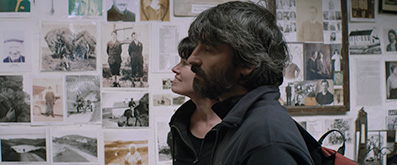
Immediately after Eoghan's conversation with Peter Lacey, Collins inserts an excerpt from Terminus* (1970) – an extraordinary RTÉ documentary depicting the depopulation of Gola Island off the coast of Co Donegal. The film has a lyrical voice-over commentary that seems to echo in Silence. The narrator says: "All the heartbreak of so many lives. The generations clinging to their dreams. Unity and community. Oh dead years, could you foresee that everything would end like this, in silence? Could you predict this last sad emptiness of silence speaking to silence? Present desolation crowding out the past. Silence and the echoes of silence. And memories, and weary ghosts, and the fast dissolving remnants of yourself. Time, and love, and life, and dreams discharged into oblivion. The full stop that speaks the end of three hundred years."
Collins has an attuned ear and keen eye for the telling quotation. He feeds archive material into Silence with breathtaking skill and sensitivity, as he has done throughout his career. The juxtaposition of footage from Terminus works with Peter Lacey's comments to such telling effect it as if that film were waiting in the RTÉ archives for decades just so Pat Collins could come along and put it to perfect use. I will miss the wise, insightful reviews of Philip French as much as anyone when the great veteran critic retires this autumn, so I was baffled by his Observer review of Silence. French dismissively describes it as a film "about an island off the Donegal coast" and damns it with faint praise. He says: "There are interesting images, some of them from the archives, but (Eoghan) and the film got nowhere that stuck in my memory." I can only say that Silence contains several moments of such sublime beauty that they will remain imprinted on my grateful memory forever. One such moment is the one in which Collins dovetails a still image of Tory lighthouse (an image he used in Oileán Thoraí, which can accurately be described as being "about an island off the Donegal coast") with footage of the lighthouse and grey, swirling sea. That superimposition, in which rocky land and rolling sea merge as one, has (when it is seen on screen) a depth and texture to match that in any painting by Turner.
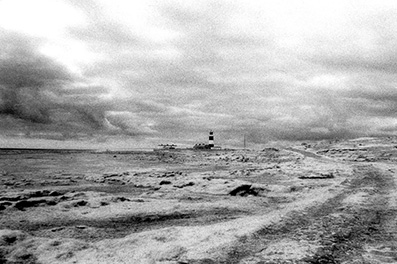
When I tell Pat Collins that I found the forthright Beckettian bleakness of Terminus even more intensely sad even than his own film is at times, he says: "You can't help but be aware of that sadness and melancholy, and think about exile, about being exiled from yourself and past versions of yourself. The village I grew up in had 5,000 inhabitants before the famine, after it there was barely 2,500 left living there. So half its population had died or emigrated in 10 years. You're never far from a ruin in Ireland. The small places are still vibrant but there has been a steady decline since the 1850s. It's been going on for ages and it's only going in one direction, unless something cataclysmic happens and there's a return to the land. You can't wallow in it, but without being maudlin, you carry that sadness in yourself. It's as much within yourself as it is in the landscape."
In Silence the stories and sounds Eoghan collects are fused. The film draws much of its force from its poetic enquiry into the mysterious ways the past haunts, and encroaches on the present. This is a film in which the voices of the dead and dispersed float in the air like misty sea spray or echo in buildings buffeted by the heartless hammering of time and salt-laced gales. The indistinct, disembodied voices we hear on the soundtrack, those Eoghan recorded as a boy, and those he imagines he hears whispering in the wind, intensify the film's melancholic atmosphere. Elsewhere in the film we hear disembodied voices more clearly, as when cartographer Tim Robinson (whose maps are used to accentuate the film's concrete sense of place) takes Pat O'Connor's idea of the "two way transmission between people and places" in other directions. Robinson says of "the generalised hushing sound" made by waves breaking at different times on different parts of the coast: "It's almost like listening to the sound of the past . . . all the bits of the past that don't get into history, all the voices that are forgotten, that were never heard, that never expressed themselves, all telling their stories . . . cancelling each other out in a voiceless confusion."
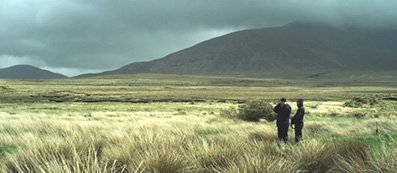
There are other, more widely apprehended voices in Silence. The film is bookended by songs by Rory Gallagher and Sandy Denny, but the most prominent musical voices in the film are those of birds. This is a film that will delight ornithologists and twitchers. It is full of the calls and caws of birds, their chirrup and chatter, their twitters and tweets. As Collins says, "the film's about sound as much as silence." The elusiveness of silence is emphasised by the constant noise of these ambassadors of nature. Within this cacophonous choir of feathered singers we can pick out individual voices: the chewk of the chaffinch, the squawk of the crow and rook, the cry of the curlew and corncrake, the gentle cooing of the mourning dove and wood pigeon – so easily mistaken for the hoot of the owl. In one of her loveliest short poems, Emily Dickinson says: "Hope is the thing with feathers/that perches in the soul/And sings the tune without the words/And never stops at all." In spite of its occasional observations on death and decay, Silence feels as full of hope as it is of birds. Collins's appreciation of the beauty in nature and in people lends the film an optimistic tone, and its sombre subject matter is offset by unobtrusive moments of wit and humour.
Early in the film, a loquacious barman disturbs Eoghan's reading with a tall tale about how starlings on a long uninhabited Scottish island still imitate the sound of mowing-machines from the 50s and 60s. The barman asks: "Is that the kind of story you're looking for?" Eoghan says, pointedly: "It's not really stories I'm after. It's more quiet I'm looking for." One of the most charming and compelling sequences in the film is built around Eoghan's encounter with writer Michael Harding, whose bestselling autobiography Staring at Lakes: A Memoir of Love, Melancholy, and Magical Thinking might have provided Collins with an alternative title. Harding 'bumps into' Eoghan as he records in Balycroy and asks him what he's doing. When Eoghan says he's recording sound away from man-made noise, sound, Harding pauses, then says, "So you're here!" Eoghan replies: "I'm here, yeah, but I'm keeping quiet."
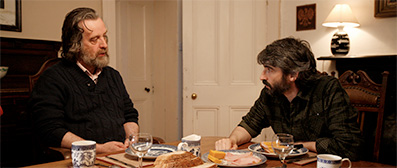
The banter continues when the two men return to Harding's home to talk about song, silence, stillness and the importance of roots. It is a delightful exchange in which Harding persistently usurps the role Eoghan plays, elsewhere in the film, of conversational guide and 'interviewer'. After listening to Eoghan sing, Harding likens human existence to the first and last notes of a song. He says: "When you push yourself into existence it's like the first note of a song, it comes from silence, and your last breath will be followed by silence, but in that time you can only be where you're rooted, where you belong, and to where you go home." When Eoghan asks him if staying in one place doesn't imply that the world will pass you by, Harding says: "No, I don't think so. I think if you stand in one place long enough, you realise that all the movement is a kind of noise." He goes on to describe stillness and a deeply felt attachment to place as a source of wisdom as well as happiness.
After Collins tells me about his brief period living in Brighton, I ask him whether Michael Harding's remarks about standing still in a single place had any particular resonance for him. He says: "It's like Patrick Kavanagh said, it takes a lifetime to know one field. A sense of place is important to me, and it's central to Silence. The more you get to know somewhere the more you love it. I can't imagine making films anywhere else. A lot of Irish filmmakers seem to be trying to get away from Irishness, but there are certain aspects of the culture that are important and need expression. There's something here that's being ignored. We need to look a little deeper and not reject who we are. It's not just about the landscape. People tend to forget what's good about their country and need reminding of the people and stories that are there, in a modern cinematic language."
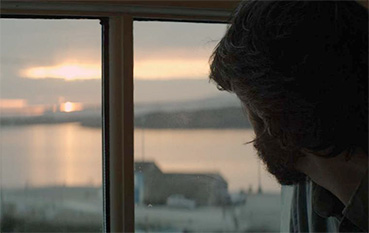
We move on to discuss the affinities between the essay film, slow cinema, and his and Collins's own work. He says he admires exponents of those forms such as Chris Marker and Jean Vigo, Albert Serra, and Apichatpong Weerasethakul. When I gauchely suggest that Silence bears comparison with Julian Pölsler’s The Wall (slow cinema) and Grant Gee's Patience (After Sebald) (the essay film), Collins tells me he hasn't seen the former and baulks at comparison to the later: "I suppose (Gee) used landscape in similar ways, but I wouldn't want to put myself in a psycho-geographical box." I hone in on Irish memory and wonder if, perhaps, he sees any parallels between Silence and Nichola Bruce's I Could Read the Sky (her 1999 adaptation of Timothy O'Grady and Steve Pyke's brilliant book). Collins says: "I hope so. That's a great book. I programmed the film at the Galway Film Fleadh. It was one of the first times Irish subject matter was used like that. It captured the Irish immigrant experience and pointed to what was possible."
I ask him if there were any other directors in Irish film history who helped shape his style. He says: "There are people like Kieran Hickey and Bob Quinn. Someone says at the start of my film on Frank O'Connor that O'Connor had it tough. Yates was one of the world's great poets, Joyce one of its great novelists, Beckett one of the great playwrights. How do you find your identity as a writer when you're up against that? I don't have to worry in that way. I don't have the authority of a Chris Marker, and maybe I never will. I feel I'm building on something in Irish cinema, but there's nobody to overawe me." It's easy to imagine the young filmmakers he nurtures at Cork Film Centre being overawed by Collins's extraordinary talent, but impossible to imagine them finding a more charming, generous or modest man to learn from.
Collins is currently editing his next film, Living in a Coded Land, which is set in the less spectacular landscape of the Irish midlands. He says of the film: "It's about the legacy of colonialism – power and privilege and how people get it. I'm also looking at our relationship to the land again. The task was to create unexpected links between the past and the present." On the evidence of Silence and his earlier work, there can be nobody better suited to that task than Pat Collins. He has done Ireland and cinema proud. We can thank the stars that he looks set to do so for many years to come.
The 1970 RTÉ documentary Terminus: http://www.rte.ie/player/gb/show/1129384/
A larger version of the still image from Oiléan Thoraí can be found here: http://www.ifi.ie/film/oilean-thorai
Click on the appropriate thumbnail to enlarge the image.
|